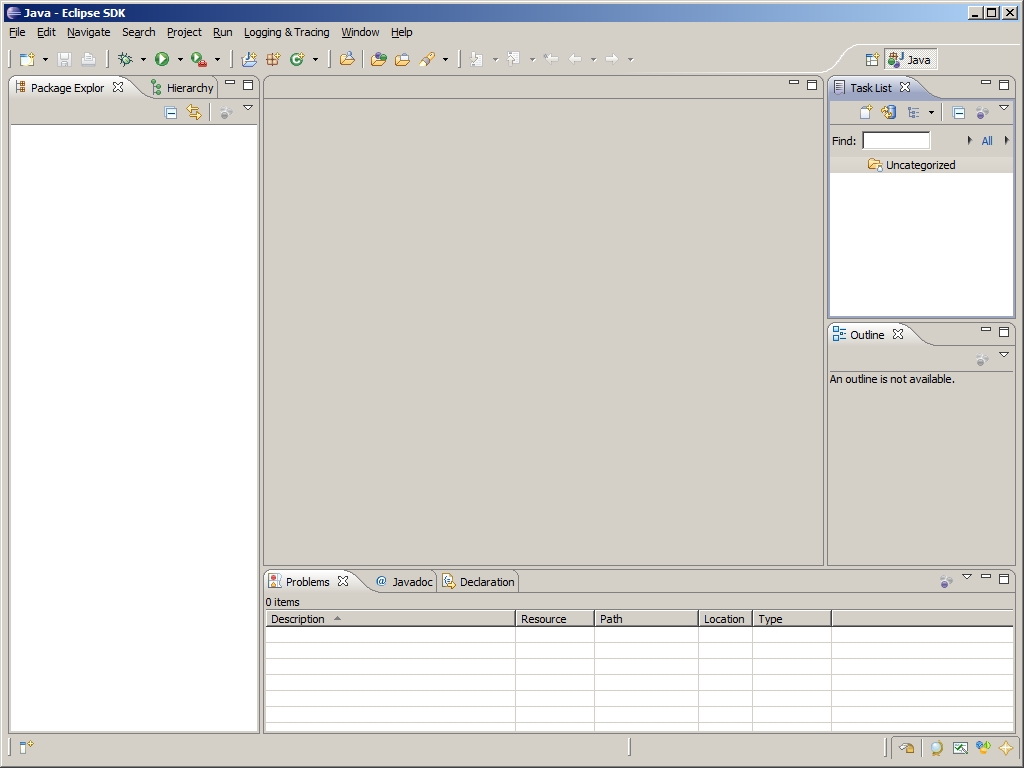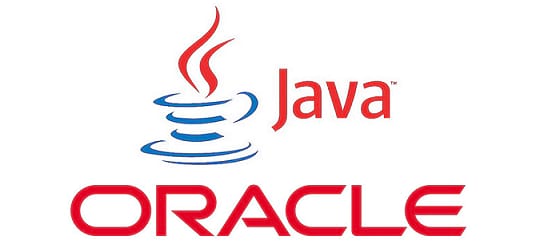Javafx Mac Download
The JavaFX is Sun’s (now part of Oracle) answer to the next generation of rich, web-enabled, deeply interactive applications. JavaFX is a complete platform that includes a new language, development tools, build tools, deployment tools, and new runtimes to target desktop, browser, mobile, and entertainment devices such as televisions. Download and install Java on Mac OS X. We will also update the JAVAHOME environment variable ne. JavaFX applications can only be packaged on Mac as desktop applications and cannot be deployed on Mac, because there is no standalone JRE or JavaFX Runtime. How To Download Javafx On Mac The Eclipse e(fx)clipse project provides tooling and runtime components that help developers create JavaFX applications. This project is part of Eclipse IDE 2018-12, Eclipse IDE 2018-09, Eclipse Photon, Eclipse Oxygen, Neon, and Mars.
We have to set the JavaFX environment on the system in order to run JavaFX Applications. All the versions of Java after JDK 1.8, supports JavaFX therefore we must have JDK 1.8 or later installed on our system. There are various IDE such as Net-beans or Eclipse also supports JavaFX Library. In this chapter, we will discuss the various ways of executing JavaFX applications.
Install Java
Getting Started with JavaFX. Introduction Install Java Run HelloWorld using JavaFX Run HelloWorld via Maven Run HelloWorld via Gradle. Modular from CLI. Article: how to download eclipse javafx for mac Thinking How To Download Eclipse Javafx For Mac to Eat? We've got you covered. These easy recipes are all you need for making a delicious meal. Find the How To Download Eclipse Javafx For Mac, including hundreds of ways to cook meals to eat. All the best to you.
Step 1: Verify that it is already installed or not
Check whether Java is already installed on the system or not. In my case, it is not installed therefore I need to install JDK 1.8 on my computer.

Step 2: Download JDK
Click the below link to download jdk 1.8 for you windows 64 bit system.
Download JDK For WindowsThere are available releases for Linux and mac operating systems. You can visit the official link for JDK distributions i.e.
JDK DownloadsStep 3: Install JDK
Open the executable file which you have just downloaded and follow the steps.
Click Next to continue
Just Choose Development Tools and click Next.
Set up is being ready.
Choose the Destination folder in which you want to install JDK. Click Next to continue with the installation.
Javafx Download Mac
Set up is installing Java to the computer.
We have successfully installed Java SE development kit 8. Close the installation set up.
Step 4 : Set the Permanent Path
Javafx Mac Download Windows 10
To execute Java applications from command line, we need to set Java Path. To set the path, follow the following steps.
Right click on 'this PC'. It can be named as 'My Computer' in some systems. Choose 'properties' from the options.
Javafx Mac Download Free
The screen look alike the above image will open. Click on 'Advanced system settings' to continue.

Above window will open. Click on 'Environment Variables' to continue.
Enter 'path' in variable name and enter the path to the bin folder inside your JDK in the variable value. Click OK.
Now Java Path has been set up. Open the Command prompt and type 'javac' In case you have already open up the command prompt, I suggest you to close the existing window and reopen it again.
We will get javac executed as shown in the image below.
The Java has been installed on our system. Now, we need to configure IDEs like NetBeans or Eclipse in order to execute JavaFX applications.
This guide provides information on how to download and install JavaFX Scene Builder 2.0 on a Windows, Linux, or Mac OS X system. Download information for the JavaFX Scene Builder samples is also included.
JavaFX Scene Builder is a design tool that enables you to drag and drop graphical user interface (GUI) components onto a JavaFX scene. It can help you to quickly prototype interactive applications that connect GUI components to the application logic. It automatically generates the FXML source code as you define the GUI layout for your application.
System Requirements
Use the following information to help you get set up and successfully start using JavaFX Scene Builder.
Ensure that your system meets the requirements listed in the JDK Certified System Configurations section of the Java SE Downloads page. JavaFX Scene Builder 2.0 supports the same Java 8, Standard Edition (Java SE 8) platforms that support JavaFX, with the exception of Linux ARM.
Download JDK 8 from
http://www.oracle.com/technetwork/java/javase/downloads/index.htmland install it to successfully run the JavaFX Scene Builder 2.0 samples.Download and install the latest NetBeans IDE 8.0 software to successfully complete the JavaFX Scene Builder Getting Started tutorial. The tight integration that NetBeans IDE has with JavaFX Scene Builder allows you to easily create a new FXML file, edit it using JavaFX Scene Builder, modify and compile your Java controller source files, and run the sample application used in the tutorial. Download the NetBeans IDE 8.0 software from
http://netbeans.org/downloads/.However, there are also instructions in the JavaFX Scene Builder Getting Started tutorial that guide you to complete the sample application using only a standalone JavaFX Scene Builder tool and the ANT utility. You can also use Using JavaFX Scene Builder with Java IDEs to get information about how to use other Java IDEs to create JavaFX projects and use Scene Builder to work on the FXML file for your application's GUI layout.
Installation
The JavaFX Scene Builder is available as a Windows package (.msi) for the Windows platform, as a Debian package (.deb) or .tar.gz file for the Linux platform, and as a disk image (.dmg) for the Mac OS X platform.
To install:
Download JavaFX Scene Builder from the Additional Resources section of the Java SE Downloads page at
http://www.oracle.com/technetwork/java/javase/downloads/index.html.In the JavaFX Scene Builder 2.0 section, accept the license agreement, if you agree to its terms.
Click the link for your operating system and follow the prompts to save the installer file.
Use the following information to install in your specific platform.
(Windows platform) Run the
javafx_scenebuilder-2_0-windows.msi installer file. Respond to the prompts as indicated in the installation wizard.By default, the JavaFX Scene Builder software is installed at
C:Program FilesOracleJavaFX Scene Builder 2.0 on a Windows platform. If you install JavaFX Scene Builder on a 64-bit Windows machine, the default installation location is C:Program Files (x86)OracleJavaFX Scene Builder 2.0.(Linux platform) Extract the Scene Builder 2.0 files from the
javafx_scenebuilder-2_0-linux-<platform>.tar.gzto a directory on your local file system, or double-click thejavafx_scenebuilder-2_0-linux-<platform>.debfile to open it with Ubuntu Software Center, where <platform> is either x64 or i586. By default, the Scene Builder application is installed at/opt/JavaFXSceneBuilder2.0/.(Mac OS X platform) Open the
javafx_scenebuilder-2_0-macosx-universal.dmgJavaFX Scene Builder 2.0.appapplication into the Applications folder.
For any of the supported platforms, the installed software contains the files similar to or a subset of what is shown in Figure 1-1, which shows the installation layout on a Windows platform.
Figure 1-1 Contents of a JavaFX Scene Builder 2.0 Installation on a Windows Platform
Description of 'Figure 1-1 Contents of a JavaFX Scene Builder 2.0 Installation on a Windows Platform'/app - Contains the JavaFX Scene Builder properties files and libraries.
/runtime - Contains a copy of the Java Runtime Environment (JRE), which includes executable files and libraries that enable JavaFX Scene Builder to run standalone.
COPYRIGHT.html - Contains the copyright information for JavaFX Scene Builder.
JavaFX Scene Builder 2.0.exe - JavaFX Scene Builder executable file.
JavaFX Scene Builder 2.0.ico - JavaFX Scene Builder icon file.
msvcr100.dll - Microsoft runtime library.
README.html - Contains a pointer to the JavaFX Scene Builder README page.
THIRDPARTYLICENSEREADME.txt - Contains the list of third-party licenses.
Getting Started
To get started with Scene Builder, read through the following documentation:
JavaFX Scene Builder Overview - A high level overview of the JavaFX Scene Builder 2.0 tool
JavaFX Scene Builder User Guide - An introduction to the user interface and features of JavaFX Scene Builder 2.0
Getting Started with JavaFX Scene Builder - A step-by-step tutorial for creating the FXML file that defines the user interface of a simple issue tracking application
Using JavaFX Scene Builder with Java IDEs - A tutorial that gives information about how to configure the NetBeans, Eclipse, or IntelliJ IDEs to use with Scene Builder.
Running the JavaFX Scene Builder Samples
Download the JavaFX Scene Builder samples to see some applications you can build using the Scene Builder tool.
Go to the Additional Resources section of the download page at
http://www.oracle.com/technetwork/java/javase/downloads/index.html.Locate the JavaFX Scene Builder section, click the Samples link, and follow the prompts to save the
javafx_scenebuilder_samples-2_0.zipfile to your local file system.Adobe zii for lightroom. Extract the sample files from the zip file to a directory on your local file system.
Each sample is a NetBeans project and also includes at least one JavaFX layout stored as an FXML file. The <sample>.fxml file can be loaded and edited using the JavaFX Scene Builder.
To run the samples, you must have the JDK 8 software. Since the samples include the corresponding NetBeans projects files, using the NetBeans IDE is the simplest way to run the sample applications. However, you can also run them using the Ant utility, Eclipse, or IntelliJ IDEA. See below for more information.
Using NetBeans IDE
Use NetBeans 8 or later to run the JavaFX Scene Builder 8.0 samples.
Go to the javafx_scenebuilder_samples-2_0-install directory in which you extracted the sample files.
Run a sample by opening the project in the NetBeans IDE, compiling it, and then running it. For example, to run the Login application, open the Login project in NetBeans IDE, right-click the project node in the Projects window, and select Run.
Source code for each sample is in the src folder for each NetBeans project.
Using Eclipse or IntelliJ IDEA
See Using JavaFX Scene Builder with Java IDEs for information on how to run the samples in either the Eclipse or IntelliJ IDEA environment.
Using the Ant Utility
If you choose not to run the samples in NetBeans or any other IDE, you can use the Apache Ant utility (version 1.8 or later) to build and run the sample application on the command line. Enter a command similar to that in Example 1-1. Note that the examples shown use JDK 8.
Example 1-1 Ant Command to Run the Sample Application
The main values for <TARGET> are clean, jar, and run. You can set <TARGET> with the value of -projecthelp to get a list of available targets. For example, to run the Login application on the Windows or Mac OS platform, type something similar to that in Example 1-2.
Uninstalling JavaFX Scene Builder
To uninstall JavaFX Scene Builder, use the standard uninstall process for your operating system.